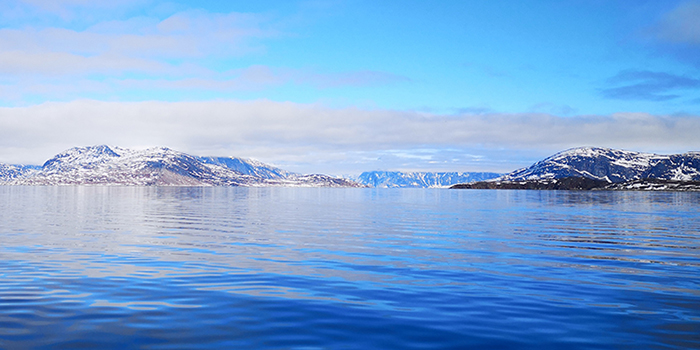Aug 12 2020
Tiny plastic particles measure around 0.1 mm in length, the same size as that of phytoplankton, which happens to be the favorite food of the copepods.

Image Credit: DTU Aqua.
Scientists from the DTU Aqua, DTU Environment, Aalborg University, and the Greenland Institute of Natural Resources detected such microplastics in water sampled from the fjord Nuup Kangerlua (or Godthåbsfjorden), running beyond Nuuk and further into the sea west of Greenland.
The researchers discovered around 1 particle for each 10 L of water, the concentration of which was similar to the one previously detected in seawater elsewhere in the North Atlantic.
However, the team had anticipated finding relatively higher concentrations, because German scientists have quantified extremely high concentrations of microplastics in ice and snow on the glaciers that are melting into Nuup Kangerlua.
The study results were recently published in Environmental Pollution—a scientific journal.
There’s plastic in the fjord. Not as much as we would have expected based on the concentrations found by the Germans in snow and ice. But it’s there. And the plastic particles are generally very small. They are exactly of a size that the copepods in the area can eat, which means they can enter the marine food webs that way.
Torkel Gissel Nielsen, Professor, DTU Aqua
Nielsen emphasizes that plastic concentrations that have been detected so far may not have considerable adverse impacts. However, if these concentrations become relatively worse, this may lead be a serious problem.
We can also see that there are 10,000 times as many phytoplankton in the water as there is plastic. So assuming that the copepods eat whatever they come across and given the abundance of food available to them, they are unlikely to end up ingesting too many plastic particles at all. And so the risk of the MPs entering the marine food webs and being distributed around is infinitely small.
Torkel Gissel Nielsen, Professor, DTU Aqua
Pumps Caught Much Smaller Particles than Nets
The research team from the VELUX project, called MarinePlastic, obtained samples from five locations along Nuup Kangerlua. They employed uniquely designed pumps featuring filters that can collect even the smallest microplastics.
However, for comparative reasons, the team also used conventional Bongo nets to collect samples. Such Bongo nets can collect a thousand times fewer microplastics when compared to the pumps. The nets only trapped microplastics that measured above 300 μm.
Nielsen added, “Using pumps like we’ve done in this case, you’ll find far higher concentrations of very small MPs—which is what is most bio-available and potentially able to enter the marine food webs via copepods.”
Nuuk is a Point Source of Plastic
The research vessel cruised from inside the fjord, wherein the glacier water runs into the fjord, beyond Nuuk, and finally reaches the mouth of the fjord. In five locations, along the route, samples were gathered, and the highest concentration of microplastics was detected around Nuuk and also further out towards the sea.
Nuuk is the largest city in Greenland and has around 18,000 inhabitants. However, it lacks effective sewage treatment plants.
Polyester, the most abundant kind of plastic, is utilized, for instance, in plastic bottles and synthetic fabrics. Nylon or polyamide is the second-most abundant type of plastic and is used in fishing nets, for instance.
We also found that MP concentrations were roughly comparable with concentrations previously found in the North Atlantic, about 1 particle per 10 litres of water. And Nuuk was identified as a point source. Compared to the measuring stations further into the fjord, MP abundance—and especially the smallest size fractions of MPs—increased close to Nuuk.
Torkel Gissel Nielsen, Professor, DTU Aqua
Journal Reference:
Rist, S., et al. (2020) Quantification of plankton-sized microplastics in a productive coastal Arctic marine ecosystem. Environmental Pollution. doi.org/10.1016/j.envpol.2020.115248.